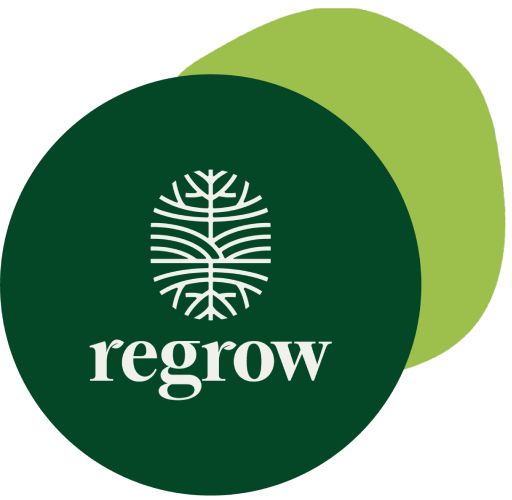This article was developed in partnership by Soil Capital and Regrow Ag.
Regenerative Ag programs, especially those with carbon as a leading indicator, have emerged as an effective land-based strategy for addressing climate change. These projects are gaining traction worldwide due to their potential to reduce emissions and increase resiliency on farms and in agrifood supply chains.
However, in order for programs to be valuable — meaning they generate high-value outcomes (like certified carbon reductions and removals) — roles must be structured in a way that ensures program integrity.
There are many components to a high-integrity program. One component that is often overlooked is the potential for conflicts of interest — also referred to as independence (as in, independent contributors for each step in the process). From this perspective, a high-integrity program is one in which there are no conflicts of interest between parties, and the primary incentive of all parties leads directly to the achievement of a climate goal. In the coming paragraphs, we’ll break down the role of independence in building integrity.
The role of regenerative ag programs in climate mitigation
Agriculture-based programs are designed to reduce emissions associated with food production and increase resiliency in food systems. Projects vary in scope, from large-scale government initiatives to smaller private sector efforts.
All of these projects share the same purpose: to mitigate or prevent climate change by reducing emissions of greenhouse gasses. Many projects share a similar method for this work: by incentivizing climate-smart farming practices through growers in a specific region or supply chain.
In addition to climate change mitigation, regenerative ag programs can help restore ecosystems, enhance water quality and bring economic benefits to rural and farming communities.

Program participants
An effective program is a collaboration between multiple managing parties beyond the farmers themselves, often including:
- Corporate partner: determines the desired outcome of the project (e.g. certified carbon reductions and removals), the region for the program, and the crops and/or commodities that fall within the program.
- Project developer: plans the program in alignment with industry standards, local policies and best practices and manages project documentation.
- Program implementer: sometimes grouped with project developers, this party implements the program on the ground, facilitating farmer enrollment, aiding in practice adoption, conducting soil sampling, etc.
- Impact quantifier: estimates the outcome of new farming practices, and measures the true outcomes of those practices once they’ve been implemented on the field.
- Program verifier: this party audits the program outcomes, and determines whether the program has been implemented and measured in alignment with the program’s chosen protocol.
How to manage programs
Optimizing for high integrity
While programs have great potential for improving our environment and economy, they must be properly managed in order to ensure their effectiveness. Climate-smart farming programs that are well managed are considered ‘high-integrity’ programs.
What makes a high-integrity program? There are multiple features that are often talked about - for instance quantification methodology, approach to additionality, permanence, verification and co-benefits - but the structural components of a program’s governance are more overlooked. On this topic, high-integrity means:
- The program includes multiple parties (detailed above)
- Participants have clearly defined roles and responsibilities
- Incentives are structured carefully to ensure that all parties are working towards a common climate goal, while incentives are aligned with distinct roles and responsibilities
- The quantification of carbon outcomes and the auditing of programs are distinctly separated from project development and the ownership of carbon outcomes, to avoid conflicts of interest
This last bullet point — separation between the development of a project and the quantification of its outcomes — is of paramount importance in establishing a high-integrity program.
Independent quantification and project development in regenerative ag programs
Well-executed project development and quantification components ensure the efficacy of programs.
Strategic project development helps ensure clear program processes and monitoring. With a strong project developer, all stakeholders involved understand their responsibilities, what metrics need to be met for success and what resources might be needed during implementation (e.g., funding).
Strong project development helps prevent double counting, compliance issues within programs, inaccurate reporting or erroneous certified carbon reductions and removals issued by the program.
Independent quantification ensures that the program is, in fact, providing the climate mitigation outcomes expected by stakeholders. Quantification helps us assess the outcomes of carbon projects, such as ensuring that a project reduces emissions at the expected rate—as well as identify areas where improvements could be made.
However, quantification and project development must be independent of one another to ensure that there are no conflicts of interest between the two roles, and that each party (project developers and quantification providers) is incentivized only to work towards the greater project goal.
Let's look at how this can work in practice with the example of Soil Capital and Regrow. Soil Capital —an agronomy firm that helps farmers leverage regenerative agriculture for food system resilience and climate action— operates the longest running, certified carbon reward programme for farmers in Europe. The firm is a highly effective project developer. Agriculture Resilience platform provider Regrow offers the science and technology needed to accurately quantify the outcomes of the program. Soil Capital and Regrow are distinctly different organizations, with independence in project development and quantification.The only shared incentive is to execute the program as planned and effectively measure the outcomes of that program. As such, Soil Capital and Regrow can collaborate to establish a high-integrity program.
To illustrate this point, consider the inverse situation: in a program where the project developer and the quantification party are connected — for instance, with the same entity owning or controlling both the project development and the detailed working of the quantification methods, or if multiple parties have exactly the same financial incentives. In this instance, the quantification party may be incentivized based on the volume of carbon assets generated. This incentive may lead the quantification party to overstate the outcomes, or the tons of carbon reduced or abated.
This situation — one in which parties are connected — isn’t hypothetical.
In recent years, project developers have acquired quantification technologies within land-based climate sectors, making project development and quantification interconnected. As the sector grows and organizations attempt to ‘streamline’ processes, it becomes increasingly important to monitor independence among parties and ensure that streamlining doesn’t lead to negative impacts down the road.
Ultimately, it’s essential that we keep project development and quantification separate from one another — it ensures both parties are working toward the project goal, and only incentivized to reach that goal honestly and with robust, accurate science.
Ensuring long-term program success
High-integrity programs lead to high-value results
Programs with clearly managed conflicts of interest are more trusted in the market. The outcomes of these programs are considered to be valuable due to the structure of the program and the checks and balances in place between project developers and quantification providers.
Valuable outcomes lead to a higher price for those outcomes and more profit in the marketplace. In turn, these profits offer more incentives for businesses to establish programs, and for growers to become involved in programs and adopt climate-smart farming practices.
If you’re interested in developing a high-integrity regenerative ag program, contact Soil Capital. To see the science and technology behind today’s leading carbon brands, explore Regrow. Learn more about their partnership here.



